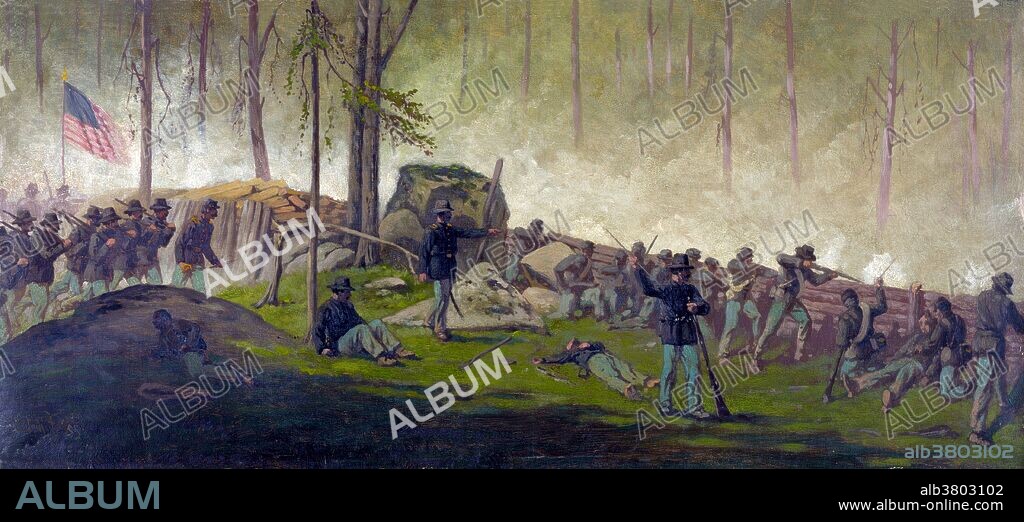alb3803102
Battle of Gettysburg, Culp's Hill, 1863

|
Zu einem anderen Lightbox hinzufügen |
|
Zu einem anderen Lightbox hinzufügen |



Haben Sie bereits ein Konto? Anmelden
Sie haben kein Konto? Registrieren
Dieses Bild kaufen

Titel:
Battle of Gettysburg, Culp's Hill, 1863
Untertitel:
Siehe automatische Übersetzung
Entitled: "Scene behind the breastworks on Culps Hill, morning of July 3rd 1862." The Battle of Gettysburg was fought July 1-3, 1863, in and around the town of Gettysburg, Pennsylvania. The battle with the largest number of casualties in the American Civil War, it is often described as the war's turning point. Union Major General George Gordon Meade's Army of the Potomac defeated attacks by Confederate General Robert E. Lee's Army of Northern Virginia, ending Lee's invasion of the North. Culp's Hill was a critical part of the Union Army defensive line, the principal feature of the right flank, or barbed portion of what is described as the fish-hook line. Holding the hill was by itself unimportant because its heavily wooded sides made it unsuitable for artillery placement, but its loss would have been catastrophic to the Union army. It dominated Cemetery Hill and the Baltimore Pike, the latter being critical for keeping the Union army supplied and for blocking any Confederate advance on Baltimore or Washington, D.C. Between 46,000 and 51,000 soldiers from both armies were casualties in the three-day battle. Oil painting by Edwin Forbes, circa 1865-95.
Bildnachweis:
Album / Science Source / LOC
Freigaben (Releases):
Model: Nein - Eigentum: Nein
Rechtefragen?
Rechtefragen?
Bildgröße:
4800 x 2198 px | 30.2 MB
Druckgröße:
40.6 x 18.6 cm | 16.0 x 7.3 in (300 dpi)
Schlüsselwörter:
1860ER JAHRE • AMERIKANER • ARMEE • ARMY • BERÜHMT • BERÜHMTE PERSÖNLICHKEIT • EREIGNIS • FEUER, KRIEG • HEER • KRIEG • NOTABEL • OELFARBE • PROMINENZ • REBELL • SOLDATEN • SUEDEN • SÜDEN • ÖLFARBE
 Pinterest
Pinterest Twitter
Twitter Facebook
Facebook Link kopieren
Link kopieren Email
Email
